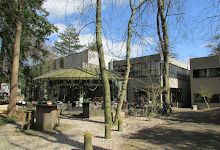Archive number: 7
Title: Focus (Instrumental) [Also known as Focus 1]
Main Album: In and Out of Focus (Also on a single 1970)
Track number: 7 (first on the Sire release)
Genre: Progressive Rock Instrumental
Studio: Sound Techniques Studio, 46a Old Church Street, Chelsea, London SW3
Length: 9' 44”
Composer: Thijs van Leer
Musicians: Jan Akkerman - Electric guitars (Fender telecasters); Thijs van Leer - Hammond organ, Mellotron, Piano, Flute; Martijn Dresden – Bass; Hans Cleuver – Drums
Producer: Hubert Terheggen (RTM)
Engineer: Jerry Boys
Label: LP - Imperial, Sire, Polydor; CD - EMI Bovema, IRS, Red Bullet
Date of recording/release: Late January 1970/Autumn 1970 (1973 in the US. In 1974 the album appeared in Brazil as Pop Giants). CD – 1988, 1993, 2001.
Title: Focus (Instrumental) [Also known as Focus 1]
Main Album: In and Out of Focus (Also on a single 1970)
Track number: 7 (first on the Sire release)
Genre: Progressive Rock Instrumental
Studio: Sound Techniques Studio, 46a Old Church Street, Chelsea, London SW3
Length: 9' 44”
Composer: Thijs van Leer
Musicians: Jan Akkerman - Electric guitars (Fender telecasters); Thijs van Leer - Hammond organ, Mellotron, Piano, Flute; Martijn Dresden – Bass; Hans Cleuver – Drums
Producer: Hubert Terheggen (RTM)
Engineer: Jerry Boys
Label: LP - Imperial, Sire, Polydor; CD - EMI Bovema, IRS, Red Bullet
Date of recording/release: Late January 1970/Autumn 1970 (1973 in the US. In 1974 the album appeared in Brazil as Pop Giants). CD – 1988, 1993, 2001.
Alternative version: A quite different version appears on van Leer's Introspection album. This has been covered on a new age mood record by The Lavender Hill Orchestra.
Notes: This is the much longer instrumental version of the opening track. It appears to be chiefly a live group session performed in the studio but the flute at the end perhaps and some of the guitar work has been overdubbed (the guitar is often double-tracked). There is plenty of reverb. Careful listening also reveals a mellotron (eg 02:07-02:25) and a piano (03:05-03:50) in the mix in the first section at certain points, as well as the organ. The track can be divided into two main sections. The first concludes (around 04:19-06:45) with a wild and bluesy guitar-led storm that has been brewing from the start as soaring and calmer passages have alternated all the way from the calm beginning (compare 00:00-01:06 with 01:07-01:18; 01:19-02:06 with 02:07-02:25 and 02:26-02:53 with 02:54-03:04). The final calm passage (03:05-03:50) leads into 03:51-04:18, which begins the rise. The second section is an increasingly wild flute-led romp (starting at 06:46) in which the guitar has a rather country-like sound but with some funky jazz playing too before breaking into heavy rock rhythms. The whole closes with a relatively abrupt ritardando, slowing down to a dying stop. It has been suggested that lines from Schubert's impromptu can be found hidden somewhere in the mix here.
Notes: This is the much longer instrumental version of the opening track. It appears to be chiefly a live group session performed in the studio but the flute at the end perhaps and some of the guitar work has been overdubbed (the guitar is often double-tracked). There is plenty of reverb. Careful listening also reveals a mellotron (eg 02:07-02:25) and a piano (03:05-03:50) in the mix in the first section at certain points, as well as the organ. The track can be divided into two main sections. The first concludes (around 04:19-06:45) with a wild and bluesy guitar-led storm that has been brewing from the start as soaring and calmer passages have alternated all the way from the calm beginning (compare 00:00-01:06 with 01:07-01:18; 01:19-02:06 with 02:07-02:25 and 02:26-02:53 with 02:54-03:04). The final calm passage (03:05-03:50) leads into 03:51-04:18, which begins the rise. The second section is an increasingly wild flute-led romp (starting at 06:46) in which the guitar has a rather country-like sound but with some funky jazz playing too before breaking into heavy rock rhythms. The whole closes with a relatively abrupt ritardando, slowing down to a dying stop. It has been suggested that lines from Schubert's impromptu can be found hidden somewhere in the mix here.
Note on the mellotron (from Wikipedia)
An electro-mechanical, polyphonic keyboard originally developed and built in Birmingham in the early sixties, it superseded the Chamberlin, the world's first sample playback keyboard. The heart of the mellotron is a bank of magnetic audio tapes. Each has approximately 8 seconds playing time. Playback heads (under each key) enable the playing of pre-recorded sounds.
The earlier MkI and MkII models [Focus probably used a MkII] contained two side-by-side keyboards: on the right 18 selectable "lead/instrument" sounds (eg strings, flutes, brass); on the left pre-recorded musical rhythm tracks (in various styles).
The tape banks for the later, lighter-weight M400 models contain only 3 selectable sounds eg strings, cello, the famous eight-voice choir. The sound on each individual tape piece was recorded at the pitch of the key to which it was assigned. The M400 tapes came in a removable frame, which allowed for relatively quick changes to new racks of sounds.
The earlier MkI and MkII models [Focus probably used a MkII] contained two side-by-side keyboards: on the right 18 selectable "lead/instrument" sounds (eg strings, flutes, brass); on the left pre-recorded musical rhythm tracks (in various styles).
The tape banks for the later, lighter-weight M400 models contain only 3 selectable sounds eg strings, cello, the famous eight-voice choir. The sound on each individual tape piece was recorded at the pitch of the key to which it was assigned. The M400 tapes came in a removable frame, which allowed for relatively quick changes to new racks of sounds.
First heard on records from the late sixties, through the 1970s the Mellotron had a major impact on rock music, particularly the 35 note (G-F) model M400 released 1970. It sold over 1800 units and became a trademark sound of the era's progressive bands. The MkI and MkII were not portable. All were expensive and temperamental and Focus probably used a studio instrument.
The unique sound of the Mellotron is produced by a combination of characteristics including the wow and flutter factor, the result being that each time a note is played it is slightly different from the previous time (a bit like a conventional instrument). The notes also interact with each other so that chords or even just pairs of notes have an extremely powerful sound.
Another factor in its strangely haunting quality of its most frequently-heard sounds is that the individual notes were recorded in isolation. For a musician accustomed to playing in an orchestral setting, this was unusual, and meant that he had nothing against which to intonate.
Another factor in its strangely haunting quality of its most frequently-heard sounds is that the individual notes were recorded in isolation. For a musician accustomed to playing in an orchestral setting, this was unusual, and meant that he had nothing against which to intonate.























No comments:
Post a Comment